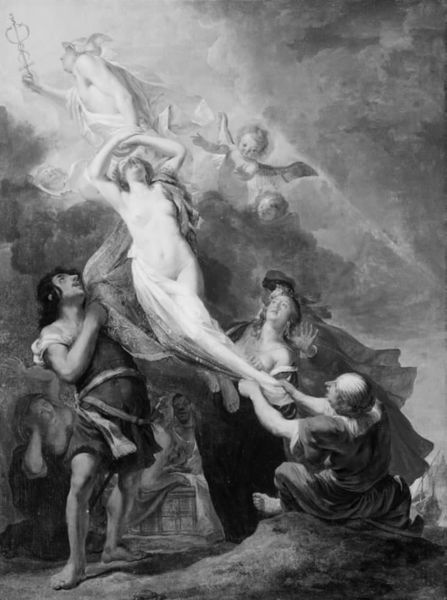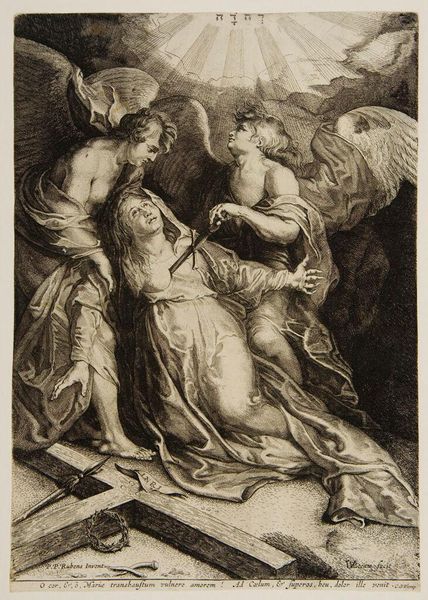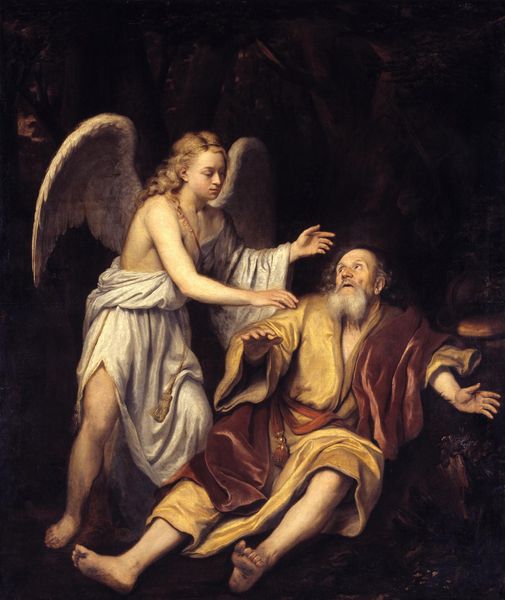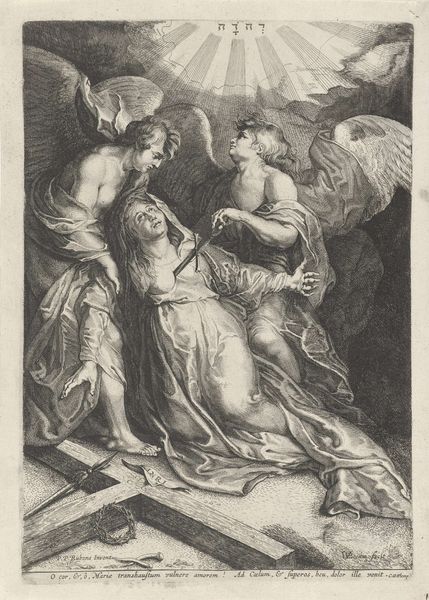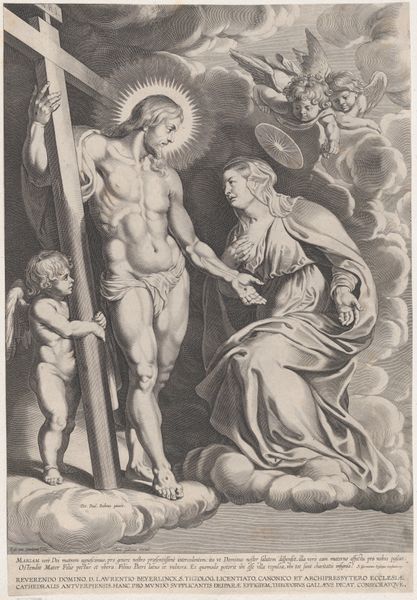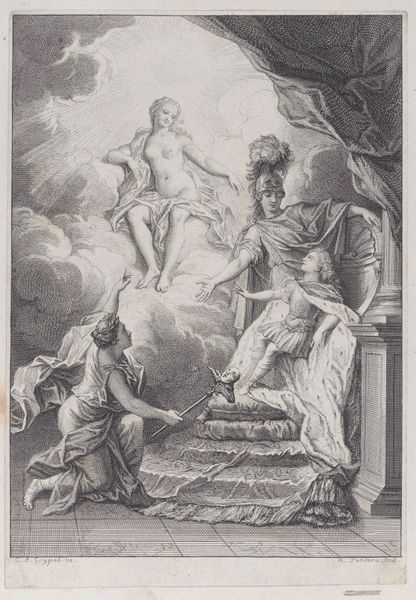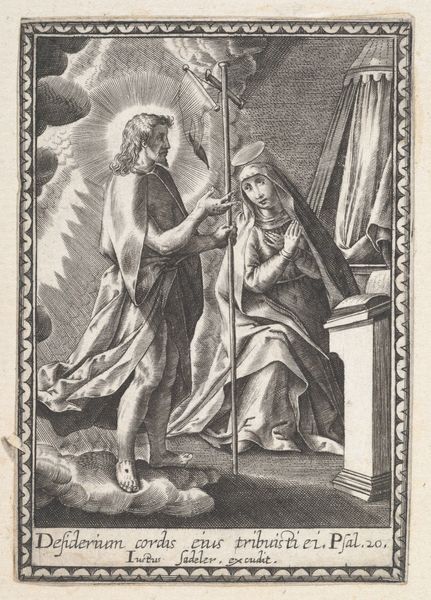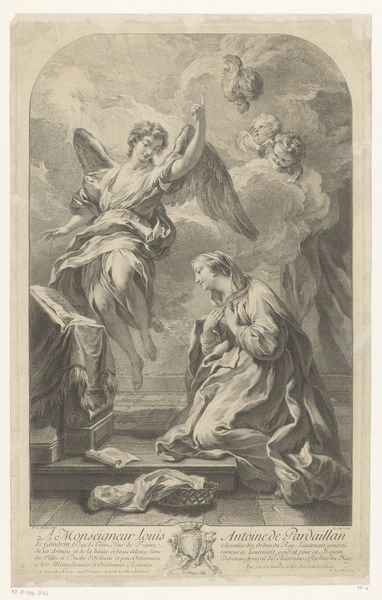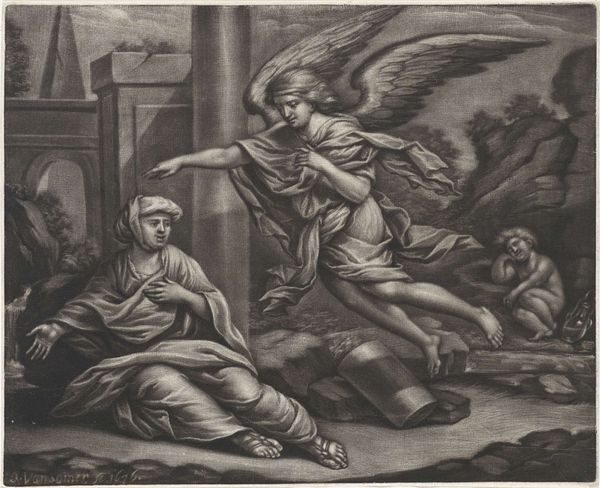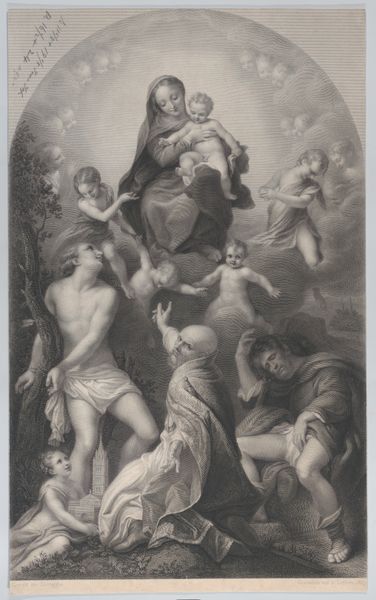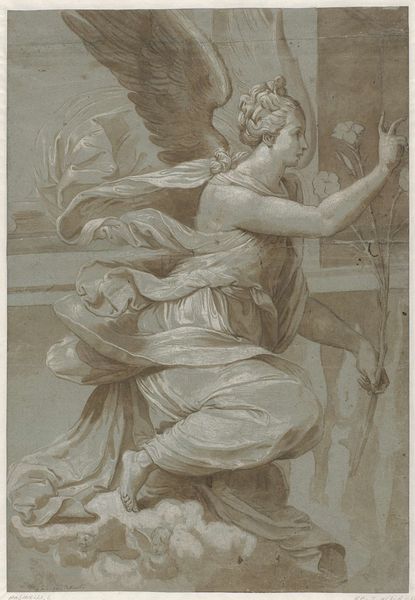
oil-paint
#
portrait
#
baroque
#
oil-paint
#
figuration
#
black and white
#
arch
#
christianity
#
history-painting
#
monochrome
#
virgin-mary
#
angel
#
christ
Dimensions: 113 x 150 cm
Copyright: Public domain
Curator: Let’s turn our attention to Jacob Jordaens' "The Annunciation," completed around 1645. It's quite a striking oil on canvas. Editor: It’s quite muted. Almost monochromatic. Is this a photograph? The texture looks compelling. It feels like I can almost touch the heavy fabric of Mary's cloak, imagining the looms and dye processes that brought it to life. Curator: It does give that impression, doesn’t it? It's interesting how Jordaens manages to evoke such weight and materiality, even with the photographic reproduction. But I find my eye drawn to the descending dove, a clear emblem of the Holy Spirit, and the lily, symbolic of Mary’s purity and innocence, bathed in a gentle light that guides our focus to Mary. It reinforces the spiritual weight of the scene. Editor: The depiction of the angel is fascinating. Angels were symbols of transition. And you can see Jordaens used expensive ultramarine to enhance it. Do you think his studio was kept warm to promote faster drying for the oil paint? We so often ignore how factors like resources affect output in Baroque art like this. Curator: It is intriguing to consider such factors. Speaking of symbolism, notice the pointing gesture of the angel Gabriel; that is an explicit call, connecting heaven to earth, a classic element in Annunciation scenes. Editor: Yes, and I'm considering the production. How many hours went into preparing the pigments? Were apprentices involved in grinding them? Whose labor enabled this devotional act in oil paint? It compels us to remember art as a process tied to human toil and materials. Curator: Certainly, appreciating art involves understanding the context in which it was made and consumed. Editor: Seeing how Jordanes skillfully handles light and shadows is a delight, it has offered me some interesting ways to reconsider the symbolism. Curator: For me, reflecting on its symbology provides a glimpse into the spiritual world of the 17th century, whereas for you, it unearths stories of artisans, materials, and societal values. Editor: Exactly, it provides us insights that may transcend a purely aesthetic experience.
Comments
No comments
Be the first to comment and join the conversation on the ultimate creative platform.
